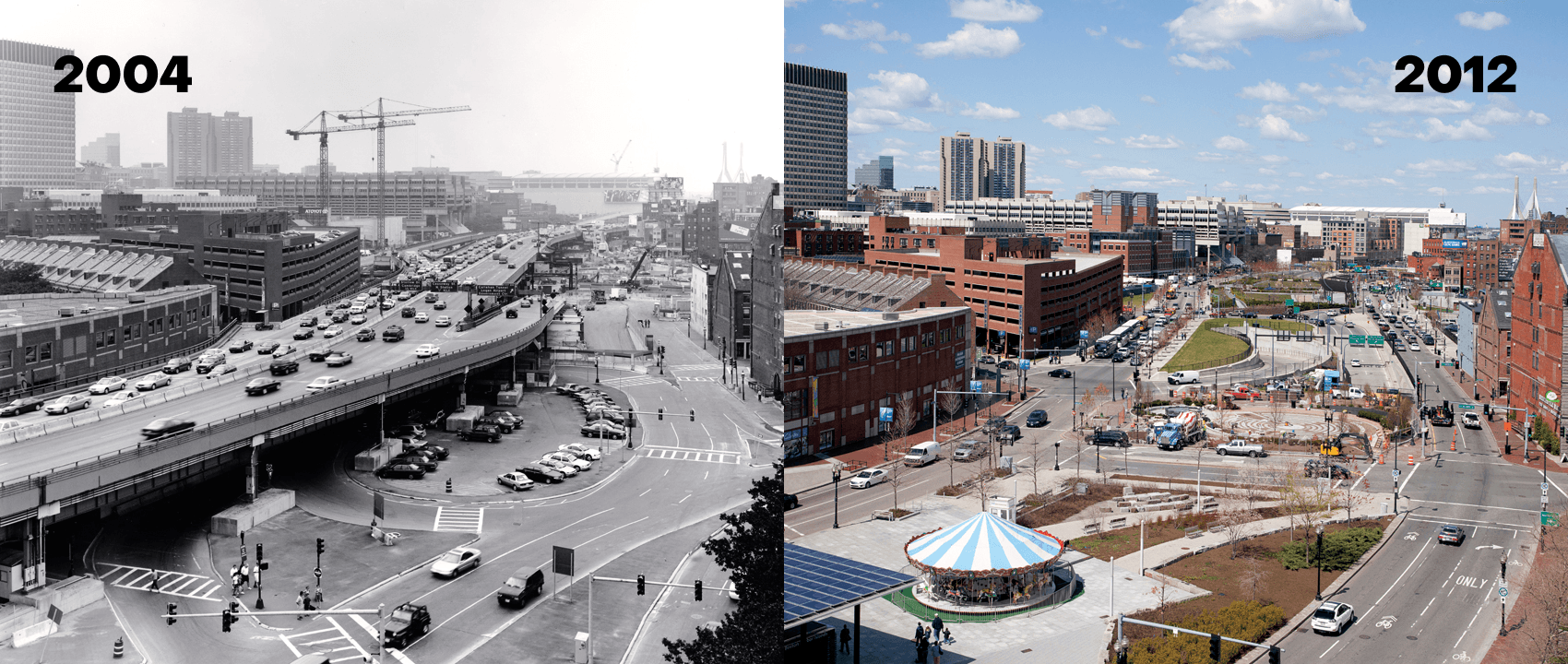Today we will tell you why absolutely any project will not go according to plan, how to assess it correctly with pre-project analytics and how to keep the budget.
You can only appreciate a project when it’s over
In 1991, the biggest engineering project in US history began. Boston was suffering from hours-long traffic jams. The six-lane motorway in the city centre was failing and city leaders decided to build a new ten-lane motorway underground.
The Central Artery project was carefully planned for nine years. It consisted of a 2.6 km long tunnel, a new bridge over the Charles River and three major interchanges. The government planned to finish the work in seven years in 1998 and to spend $2.8 billion on it.
Downtown Boston before and after the tunnel construction. Construction workers dug up so much earth that houses in the excavated areas were infested with sewer rats, and popularly the construction site became known as the ‘Big Dig’.
Things did not go according to plan. During excavations under the houses builders found shipwrecks, the salty water from the Atlantic Ocean constantly eroded the concrete supports, and the epoxy glue for the panels on the tunnel roof could not bear their weight.
The Central Artery budget had already risen to $5.8 billion when it began in 1991. Work did not finish until 2007, nine years behind schedule. The US spent $22 billion of taxpayers’ money, adjusted for inflation.
The history of the Boston Central Artery shows that even nine years of project development does not produce a 100% accurate estimate. Or even 50% accuracy. The real costs have increased tenfold. The reason for this is the uncertainty at the time of the estimate.
How uncertainty kills projects
In very simplistic terms, a project can be thought of as consisting of an idea, the resources to implement it, and a potential benefit. For example, a company plans to release RAID: Shadow Legends in a year and take a chunk out of the mobile gaming market.
With a small two-page brief in hand, developing the “killer” looks appealing. After market research and the ToR, it turns out that there are 20 clones of the game, and you can only hope for 1% of the market. Six months after the project starts, two new programmers, a designer and a million roubles for advertising will be needed.
The insidious external environment keeps changing plans. Development drags on for a year – a competitor releases the product first and the idea goes stale, an architect falls ill – work stops for a month
Every project does not go according to plan.
There is no way to write 500 pages of terms of reference, execute it to the line, and still keep the budget and deadlines.
When there is only an idea, no one knows the nuances of development and possible problems. Estimation becomes more accurate when we gather information about the project and the external environment. The relationship between the accuracy of the estimate and the amount of information shows the cone of uncertainty.
A project with such planning errors will bankrupt a small company and set back a large one in its development. To prevent this, it is necessary to reduce uncertainty – to get as much information as possible before development begins. This is what pre-project analytics are for.



